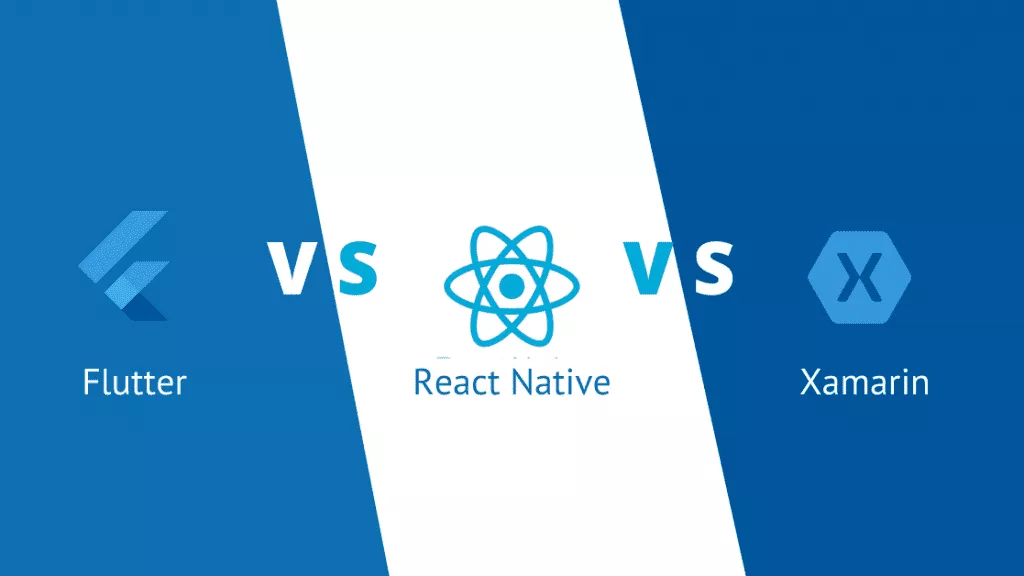Flutter, React Native, or Xamarin: which is the best framework for cross-platform mobile app development? Despite the fact that all three are useful, the variance in utility and feasibility might not be the same for every business. However, before you start a new project in 2022, examine the three technologies to make an informed decision.
The need to build the top mobile apps grows in tandem with the growth of the mobile app market. Most companies are looking for the most useful apps for their operations. Today, there are more than 6 billion smartphone users worldwide, with that number predicted to rise to 7 billion by 2025.
Furthermore, with mobile apps accounting for 57% of smartphone usage, mobile apps are becoming increasingly important for all sorts of organizations.
With the number of smartphone users growing at 2.2 percent per year, providing a quick, relevant, and exceptional customer experience via mobile applications is a must, especially. However, the requirement to develop an application raises the following issues:
- Which platform, iOS or Android, is superior?
- What is the most effective technology or techniques for developing an app?
- How much does it cost to build a multi-platform app?
- How do you choose between developing hybrid apps, native apps, or cross-platform apps?
Continue reading if you’re having trouble answering these questions. We’ll compare Flutter, React Native, & Xamarin to see which framework is the best fit for your business.
Why Flutter, React Native, and Xamarin? A Brief
You can find myriad tools available online for cross-platform development, so why limit them to those mentioned above three?
Well, not only are they the top three most popular choices, they are the most promising technologies that help businesses to stand apart. And they are still up and running!
So first, let us make a short intro about every one of them.
Flutter
It is a Google framework that was released in 2017. Google stands for dependability and a strong development ecosystem. It would be unfair not to include Flutter in a list of the most acceptable frameworks for app development. The platform encourages developers to write native code and provides a familiar native environment with a great user experience.
Dart’s code sets it different from the competitors since it uses the C library to compile, which eliminates the complexities of JavaScript. You may also track every change in seconds with Hot Reloading.
React Native
In 2015, Facebook began rolling out the feature. It was positioned as a tool for even speedier app development, with a large number of ready-made UI components. Because it can render code for functions, especially native APIs, React Native delivers performance comparable to certain native apps.
It also enables ReactJS developers to build complicated code using native models in native languages. Large datasets are difficult to render with React because it uses JavaScript. Furthermore, because it is not compatible with Android or iOS, it lags behind some native systems.
Looking at the current remote scenario, most companies prefer to hire remote React Native developers to boost their software business.
Xamarin
It is considered to be the oldest of the three. It gained popularity for its high performance after its release in 2011, though it wasn’t the ideal choice for complicated or graphically-heavy apps. Microsoft has owned Xamarin since 2016.
You can easily build and release apps using Xamarin. It now includes Hot Reload, Hot Restart, Visual, and Shell to simplify and save development time. It provides a great space for describing your application’s visual hierarchy, perfect UX, and a built-in search evaluation tool.
| Flutter | React Native | Xamarin | |
| Popular applications built under frameworks | New York Times, Square, Alibaba, Hamilton | Skype, Pinterest, Discord, Facebook, Instagram, UberEats, Airbnb | Olo, The World Bank, Storyo |
Flutter vs. React Native vs. Xamarin: Comparison Based on Characteristics
To determine which one is the greatest among the powerful cross-platform app frameworks, Flutter vs. React Native vs. Xamarin, let’s first identify the characteristics we’ll be comparing:
- Stack of Languages
- Performance
- Programming Language
- User Interface
- Compatible Platforms
Let’s begin…
1. Stack of Languages
Let’s take a look at the languages supported by each platform, as well as the advantages of each.
Flutter: You should use Flutter, built on Dart to create high-quality Android and iOS apps. Dart is a PL with a range of capabilities based on C/C++ and Java. Thanks to Dart, developers can use Flutter to create various apps.
React Native: React Native is a Facebook-sponsored project that combines the benefits of JavaScript and React JS in one package. The most convenient of the three frameworks is React Native, which allows developers to write code in Swift, Obj-C, or Java as needed. If you need to manage complex processes in your React Native project, you can use native modules and frameworks.
Xamarin: To create Android, iOS, and Mac apps, it combines the best of C# and.Net. C# and Xamarin can be used to create anything that would otherwise require native languages. Native open-source libraries for iOS, Android, and Xamarin are not available to the developers. Developers can use various .Net libraries to fill in the gaps and meet such needs.
2. Performance
Performance is the most critical thing to consider when it comes to mobile applications. So, how do the apps perform when they’re built with different frameworks? Let’s check out;
Flutter: When compared to the other tools described above, Flutter comes out on top. Because it benefits from Dart, it has incredible speed. In addition, no JavaScript is used to connect with device native components. Hiring a remote Flutter developer not only gives you access to a larger pool of talent but also helps you to find experienced Flutter developers in countries with cheaper living costs.
React Native: It allows apps to behave similarly to native apps. This is because it employs code that is unique to React Native APIs. React Native allows developers to script code for highly demanding and complex operations using native modules. These native modules are programmed in native languages, making them more accessible to developers.
Xamarin: Xamarin offers native-like performance. You can use Xamarin to create mobile apps in two ways: Xamarin.Android/Xamarin.iOS, and Xamarin.Windows. Forms. Xamarin. Forms is based on a platform-independent concept of broad code sharing. It has the effect of lowering the code’s performance in numerous operations and executions.
3. Programming language
Flutter: Flutter focuses on creating high-quality apps using the Dart programming language. Dart, which is based on C/C++ and Java, has a lot of advantages, and despite being a new tool, Flutter has become a popular choice among app developers.
React Native: This technology makes use of Javascript, which is one of the most performant languages. Because Javascript is a well-known and widely-used programming language, it makes it simple for developers to construct a new app. React Native allows the developer to write code in Swift, Java, or Obj-C according to the specifications.
Xamarin: If you want to create an app that focuses entirely on providing a native-like experience to its customers, the ideal option is to hire remote Xamarin developers. They will help you achieve the project goal by using the C# and .Net programming languages. Furthermore, C# has the same doability as native languages.
4. User Interface (UI)
Users evaluate apps in real-time while they are being used. As a result, the user interface should be easy to use and provide a high level of user engagement.
Flutter: Flutter has a reputation for being the best when talking about UI. Flutter offers incredible efficiency and performance. On the other hand, Flutter is considered the best to create cross-platform apps.
React Native: React Native’s modules operate in tandem with native UI controllers to provide a better user experience similar to native apps. It also uses ReactJS libraries and UI elements, making UI development easier.
Xamarin: You can use Xamarin to create the user interface. Xamarin or Android/iOS Forms. The former method takes a long time but provides a user experience similar to that of native apps. The development process becomes more accessible and takes less time when using Xamarin.Forms. However, the Xamarin app development does not guarantee that the app will look and feel like native apps. Internal company endeavors, where the user interface is less important, should prefer this type of development.
5. Compatible Platforms
Flutter: Supports iOS 8+ and Android Jelly Bean+
React Native: Supports Android 4.1+ and iOS 8+
Xamarin: Supports Android 4.0.3+, iOS 8+, and Windows 10
Note: Outsourcing has been a global trend to ensure a company’s existence in recent years. Why? It equips you with quick access to a pool of highly qualified candidates. When outsourcing your software development tasks, you should follow the crowd because it is cost-effective and guarantees high-quality results. As a result, you can choose a reliable remote developer who can fit your requirements to begin your outsourced application development process sooner, reduce errors, and deliver quality.
To Wrap Up
Flutter, React Native, and Xamarin are three frameworks capable of producing high-quality mobile applications for your business. These frameworks have made mobile app development a lot easier and faster.
However, because there are so many frameworks available, deciding on one or judging which one is superior can be difficult. All that is needed is for a business owner to consider which framework would best fit your company. Some people prefer React Native to code, while others choose Flutter, and a few people favor Xamarin.
Which option do you prefer for developing a business app? Was it a resounding success? Please tell us in the comments section below. Also, if choosing the best-fit framework for your project seems challenging, you can even hire a reliable outsourcing company to give you the best advice with quality services.
Summary
Kickstart Your Project With Us!
Popular Posts
CONTACT US
Let's Build Your Agile Team.
Experience Netsmartz for 40 hours - No Cost, No Obligation.
Connect With Us Today!
Please fill out the form or send us an email to







